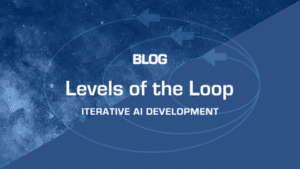In the world of artificial intelligence, particularly with large language models (LLMs), there’s a major issue known as the hallucination problem. This isn’t about AI seeing things; it’s about AI generating information that’s incorrect, even though it might sound plausible. The LLMs are just looking at patterns and need guardrails.

At Jaxon we’re helping data science teams architect the right guardrails, which for us means the optimal combination of techniques like RAG (Retrieval-Augmented Generation), and RLHF (Reinforcement Learning from Human Feedback)… then marrying in knowledge graphs, vector databases, and domain-specific languages.
Why Do LLMs ‘Hallucinate’?
LLMs predict the next word in a sentence based on patterns they’ve learned from a vast amount of text. But sometimes, they make a leap that isn’t based on real facts. They might generate a statistic that seems reasonable or a historical fact that isn’t true. Why does this matter? Because when we rely on AI for accurate information, these false but confident-sounding answers can mislead us.
The Significance of the Hallucination Problem
In areas like medicine, law, or finance, getting the facts right is non-negotiable. If an AI gives a wrong medical diagnosis or inaccurate legal advice, it could have serious consequences. As LLMs become more common in our work and daily lives, ensuring they provide truthful and reliable information is crucial.
The Role of RAG in Reducing Hallucinations
Here’s where Retriever-Augmented Generation (RAG) comes into play. RAG works by combining the power of a retriever and a generator. The retriever first searches a database of reliable information to find the right context for a query. Then, the generator (our LLM) uses this context to craft a response. This two-step process means the AI isn’t just relying on what it ‘remembers’ from its training data—it’s actively looking up information to respond more accurately.
Leveraging Domain-Specific Languages
Another layer of precision can be added with domain-specific languages. These are like specialized encyclopedias for different fields—medicine, law, coding, you name it. By training an LLM to understand and use these specialized languages, it gets better at understanding context and reduces the chance of ‘hallucinations’ in specific areas.
By combining the RAG approach with training in domain-specific languages, we can significantly cut down on the instances where LLMs provide information that’s just plain wrong. It’s about creating a safety net that ensures AI is a reliable tool we can trust, paving the way for more robust and dependable AI systems.
Adding Reinforcement Learning from Human Feedback (RLHF) to the Mix
Besides RAG and domain-specific training, there’s another critical technique in our arsenal for combating hallucinations: Reinforcement Learning from Human Feedback (RLHF). This approach fine-tunes the behavior of LLMs using feedback from human trainers. In essence, humans review the AI’s responses and provide corrections, shaping the model’s future outputs to be more accurate and truthful. RLHF acts like a teacher guiding a student, emphasizing the importance of not just generating plausible answers, but correct and validated ones.
This human-in-the-loop methodology is pivotal for several reasons. It doesn’t just help the model learn from its mistakes; it also steers the AI towards understanding the nuances and intricacies of human values and factual correctness. When combined with RAG and domain-specific expertise, RLHF can drastically decrease the frequency of hallucinations. It teaches the model the critical skill of discernment, significantly enhancing the trustworthiness of the AI. With RLHF, the model isn’t just memorizing and regurgitating facts; it’s learning the process of verification and the importance of accuracy, making it a more reliable partner in our interaction with technology.
As we continue to refine these models, the goal is to make them not just smarter, but also more responsible—capable of knowing when they know something and, just as importantly, when they don’t. It’s a complex problem, but with these advanced techniques, we’re making solid progress towards AI that’s both powerful and trustworthy.
Want to learn more? Contact us and let’s get started!


